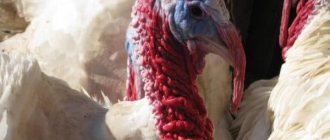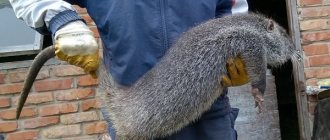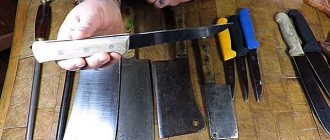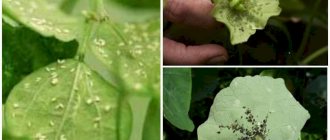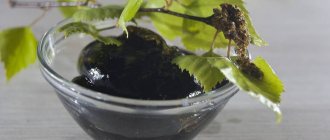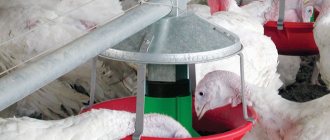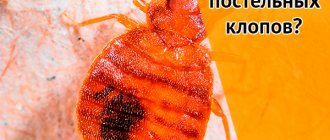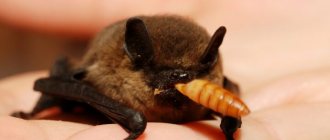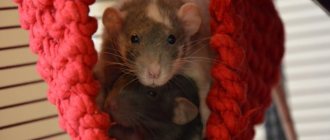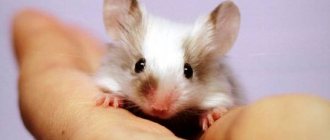Home » Articles about turkeys » How to pluck a turkey?
The first rule describing how to pluck a turkey correctly: carry out the procedure carefully and quickly. It is best to slaughter and process the bird before the molting period, otherwise removing the feathers will severely damage the skin on the carcass.
There are 4 main ways to pluck turkeys:
- dry;
- with scalding;
- using an iron;
- using special nozzles or devices.
When understanding how to pluck a turkey, it is important to remember: this is a very difficult job, so it is difficult to do it without a developed skill. It requires strict adherence to instructions and a willingness to work hard.
How to determine whether a bird is ready for slaughter
Determining the correct timing is a very important parameter for any poultry farmer.
Domestic turkeys can be put under the knife as soon as they reach a weight of 12 kg. The average age of birds at this moment reaches 240-300 days. It is worth paying attention to the fact that meat breeds require slightly less time to grow. Broiler turkeys can be slaughtered from day 120
Poultry farmers should know that birds that are too young or too old are not suitable for meat production. The meat obtained from the first type of birds is too little, and from the second the quality of meat is not very high.
recommended articles:
Fattening turkeys
Many breeders consider the optimal period for slaughtering livestock that has reached the age of 2-3 years. This category of turkeys produces less juicy products, but is perfect for first courses or stuffing. At this age, birds must be slaughtered, otherwise the meat products become tough and practically lose their value. It is necessary to score before the change of feather cover begins, otherwise thorough plucking will not work.
Preparation
The bird is ready for slaughter when its weight reaches more than 12 kg; usually turkeys already grow to these parameters at 8 months of age. Broilers are ready for slaughter even earlier; they are subjected to the procedure after 4-6 months. If you are late, the meat will not lose its dietary value, but will not be as tender.
Even males at the age of 2-3 years have to be slaughtered, because as producers they lose value, their meat is subject to further processing and is suitable for consumption. It should also be remembered that the slaughter procedure is carried out before the start of molting; otherwise, the carcass will not be ideally plucked due to the large number of stumps.
Before slaughtering, it is necessary to prepare the bird. It is important that at the time of manipulation the turkey’s stomach and esophagus are free of food. Otherwise, it will be more difficult to gut it, and the quality may suffer: after 2 days, the crop and cloaca will acquire a bluish tint:
- The bird cannot be fed on the eve of the scheduled day, the minimum period is 14 hours, but it is better if it does not eat for 24 hours.
- Turkeys should be placed in a dark room, but water should be freely available, this will help empty the intestines of feces and the bird will not lose weight.
- It is possible to give a solution of Glauber's salt, it will make the turkey's feces liquid, and it will leave the body faster.
- It’s a good idea to include rye flour or bran in the bird’s diet before slaughter.
At the time of slaughter, the turkey must weigh at least 12 kg
Description of the procedure
Feathers are trimmed after the feather cover is renewed - the result is maintained until the next molt. You will need 2 people to do the job - one to hold the turkey, securing the legs and holding it in place, and the other to do the trimming. If the bird actively resists, it can cause serious wounds to a person with its claws or beak. A bag placed over the turkey’s head will save the situation (it can be replaced with an opaque fabric). Limitation of vision is disorienting. In most cases, such a measure is not necessary - the operation is painless and does not take much time.
After the turkey is secured, the wing is opened like a fan. Feathers are cut to 2/3 of the length using sharp scissors or pruning shears. As for the technique, several options are possible.
- You can trim the secondary flight feathers - they are located on the side of the forearm. This “haircut” does not deteriorate the appearance of the birds. The downside is that this may not prevent flights.
- Experienced poultry farmers recommend immediately shortening the main flight feathers located on the hand. It is believed that it is enough to treat 1 side - the balance will be disrupted and flights will become impossible. Judging by the reviews, the effectiveness of this method is questionable, but it’s worth a try. Much depends on the weight of the bird - it will be difficult for heavy birds to get into the air and maintain balance; for light breeds, it is quite possible that they will be able to fly short distances and fly up onto the roof or tree branches.
- Trimming two wings at once is considered the most effective. A “haircut” will most likely prevent flights. But this method also does not guarantee a 100% result - many note that the bird still takes off, only it flaps its wings more often. This mainly applies to light breeds.
- Another option involves completely shortening the main feathers on one wing. On the other side they are trimmed one at a time. The tail, which serves as a rudder during flight, is thinned out in the same way. This method can bring positive results.
- The next option does not involve shortening at all. The cut is made along the shaft of the feather, removing the fan from one side. This creates holes that make it impossible to fly. The advantage of this method is the preservation of length - the hen does not lose the opportunity to scoop the eggs under herself. In addition, the appearance suffers minimally.
- Another method is called chess. On the first flight feather, the fan is cut off on one side, the second is shortened by half the length. This is repeated with all the main flight feathers.
- The next method involves partial shortening. The first 4-5 flight feathers are left long, the rest are cut off by 2/3 of the length. With the wing closed, such a hole is invisible, and the appearance of the birds does not suffer. Nothing prevents the hen from taking care of the clutch. The effectiveness is questionable. Many note that individuals belonging to light breeds continue to fly.
Removing fluff with an iron
This method is very often used to remove all the cover from a domestic idea, and not from a wild one. It is advisable to use an iron that you no longer use and that has heating modes. To do this you will need:
- pump (which is used to inflate a mattress or balls);
- strong rope;
- products made from natural and pure fabric;
- shallow container with cold water;
- and, of course, an iron.
after you are sure that you have everything, you need to place the idea in the socket of the pump itself in the free space between the neck and the skin itself. Then you can start pumping air, but do it slowly and adjust the fullness of the space so that the skin does not burst. You can pump air until all the feathers rise up, but if this does not happen, you need to repeat everything again, perhaps you have positioned the pump incorrectly. The most important thing in this plucking method is that the skin does not burst.
after you have made sure that all the feathers have risen up, you can pull out the bell, and to prevent air from escaping, tie the bird’s throat with a rope, tightly and firmly, but so that later you can untie all the knots. Take a piece of cloth and wet it very well in water, cover the carcass with a rag and apply a hot iron. The temperature of the iron should be at 2-3 positions, but if you understand that the power is not enough, then increase it, the main thing is not to burn the idea. Instead of fabric, you can use gauze, but then it must be folded in half.
It's not difficult to pluck a turkey
Tips from farmers: It is better to use an iron that also has a steam function. When you “iron” the carcass, you can steam it, but no more than eight seconds. This will make it easier and easier to remove and remove the cover. Plucking a turkey is not a difficult task. In the video you can find information regarding plucking Turkey at home.
What are the special devices?
If there is a large volume of birds on the farm, then it will be very difficult to work with each carcass yourself, so there are special devices that can help you with this. Most farmers use a screwdriver or drill, or whatever they can find at home. But for such tools you will need to buy special attachments, with the help of which you can very quickly and easily strip the carcass of all feathers. In fact, this cleaning procedure will take no more than two to three minutes. The most important thing to pay attention to is that it is best to do this outdoors, but if you do it indoors, then it will be completely covered in feathers, which will then have to be removed.
Afterwards it will be necessary to check and sort all the received material. In addition, today there is a special machine that removes the top cover. Its size will depend on what breed of turkeys you have and how long they are. The principle of its operation is very easy. The finished carcass is placed in a special drum, which has already heated up to a certain temperature. When it starts to spin, special fingers that are inside it will gradually remove all the feathers. Turkey is best slaughtered at the age of seven to eight months. Turkeys are usually slaughtered at the age of two years, this is due to the fact that, unlike the Turkey, the male can retain his mating ability longer.
Plucking and gutting a turkey is one of the most difficult and arduous jobs. They require a lot of attention and concentration. A turkey, like any bird, must be plucked quickly and thoroughly. Of course, all this must be done before the molting period, otherwise the carcass can become very spoiled. That is why experts recommend carefully monitoring this period.
Turkey slaughter methods
There are several ways to slaughter a turkey:
Carcass cutting technology
- the simplest one is external;
- external;
- interior.
For many poultry farmers, a simple method of slaughter at home is considered acceptable - decapitation of a turkey with an ax, in which the windpipe is cut along with the blood vessels. This method has its advantages: it helps to quickly deal with a heavy turkey.
However, cutting off the head is a rather dirty method. When a turkey comes into contact with an ax and the ground, microbes penetrate the meat and spread throughout the carcass, accelerating the spoilage of the product. Moreover, with this method there is a high risk of getting dirty from head to toe, as blood splashes fly in different directions.
This type of turkey slaughter is suitable if the bird is immediately processed for consumption.
External method
Layout of vessels, for external slaughter
The more common method of turkey slaughter is external. It is divided into left-sided and bilateral. It consists of making a small incision in the turkey, opening the jugular vein. It is located on the left side of the neck, 25 mm below the ear opening, next to the facial artery.
Unilateral
Take the turkey by the beak, make an incision in the skin and a bunch of veins and arteries (carotid, facial, jugular and others). The length of the cut will be 20-25 mm for adults and 10-15 mm for turkey poults.
Double sided
Knives for slaughtering birds must have a non-slip handle
Here you need to puncture the skin below the ear and immediately open all the veins, moving the blade to the right. In this case, a hole of no more than 15 mm should form on the opposite side, through which blood will flow.
Interior
The internal method is the most delicate and clean of all available methods of slaughtering turkeys. The second name for this type of slaughter is “split.” Here the jugular vein is also opened, but only through the turkey’s beak. The bird must first be stunned on the head with a heavy object.
The technology of the procedure is as follows:
Slaughter of poultry through the beak
- A knife is inserted deep into the throat and the vessels in the back palate are cut. The incision site is located on the left above the tongue, where the pontine and jugular veins connect.
- Then an injection is made into the turkey’s cerebellum, for this they aim at the lower right part of the head through the palatine foramen.
The cerebellar injection relaxes the turkey's muscles and improves blood flow from the bird. The bird is easier to free itself from feathers and down.
The next step is bleeding the turkey. To do this, hang the carcass by its legs, having first spread its wings. Place a bucket or other container under the turkey to collect blood. After this stage is completed, they plug the turkey’s throat with a paper or cloth swab. This is required to ensure that residual blood does not stain the carcass.
https://youtube.com/watch?v=PZO7IpnO6Tg Slaughtering and plucking a turkey
If you keep birds in your backyard, sooner or later the time comes to slaughter the bird for your needs or for sale. If you are new to this business, in practice there will be many more questions than might seem at first glance. For example, the main stages after slaughter are plucking and gutting
It is very important to do these procedures correctly, because the quality of the meat, fluff, and presentation of the carcass will depend on the execution.
Safety of meat products
There are several ways to store turkeys before eating or selling:
- cellar or glacier;
- vacuum packaging;
- freezing containers.
After the bird has been gutted, it is not recommended to consume meat products immediately. It needs some time to ripen: at this moment fermentation occurs. Under the influence of natural enzymes, the structure of the protein changes, it becomes more acceptable for consumption and is better absorbed by the body.
After the cooling phase has passed, the muscle fibers become stiff. After 24-48 hours (it all depends on the age characteristics of the bird), the muscles relax, and the meat product is considered ready for consumption. Young animals ripen earlier - in 12 hours.
Turkey slaughter
Keep in mind that slaughtering a bird is a rather responsible procedure and should be taken seriously. Even if you do it the old fashioned way, using an axe, try to at least bring the slaughter area into compliance with minimum sanitary standards. Remember that in the summer flies, carriers of various infections, instantly flock to the blood, and a lot of parasites live in the soil.
Prepare everything you need in advance: dry, clean rags, enough water, thoroughly wash your tools (knife, axe). If you choose an axe, you don’t need to do it directly on the surface of the old deck. Place some kind of tabletop on it, after wiping it.
It is interesting to know how much a turkey chick and an adult turkey weigh.
Slaughter
If you decide to resort to the internal slaughter method, it must be done in the following sequence:
- Open the turkey's beak and use a sharp knife to sharply cut the vessels located on the left above the tongue.
- The blade is pulled out slightly and a thrust is made just as sharply, but a little lower and in the center. The hand with the knife should move from bottom to top, its target is the cerebellum.
- The carcass is hung by the legs to drain the blood.
- A completely bled carcass can be plucked.
Plucking
It is best to pluck a bird immediately after slaughter. In private households and small farms, the procedure is carried out manually. In order to properly pluck the carcass and remove all the flight feathers, it is doused with hot water.
Find out more about how to pluck a turkey at home.
The water temperature should not exceed 65 °C, and the carcass should remain in the water for no more than a minute. Immediately after removal from the water, plucking begins. This must be done quickly so that the pores do not have time to close, in which case the flight feathers are very difficult to remove.
When all the feathers are removed, it is necessary to give the carcass a normal appearance:
- remove blood from the throat and mouth;
- rinse extremities thoroughly;
- use a dry cloth to remove moisture from the carcass, and you can singe;
- singeing at home is carried out over a gas stove, slowly and smoothly passing the carcass over the fire;
- After removing the remaining feathers with fire, you can begin gutting.
Important! It is believed that it is better to pluck the turkey as soon as the blood has drained, and it is better to let the turkey cool.
Gutting
The poultry gutting procedure is carried out as follows:
- The carcass is placed on its back on a stable horizontal surface (table).
- With one hand they hold the carcass by the sternum, with the other they stick a knife into the center of the belly, just below the chest. Moving the knife down, cut the peritoneum.
- The intestines are removed from the slot along with the cloaca.
- The stomach, liver, crop and heart are removed separately.
In the event that all the offal (together with the emptied and washed stomach) and the neck are placed back into the womb, the evisceration is considered incomplete. Such meat should not be stored in the refrigerator for more than 48 hours.
Complete evisceration involves removing the neck down to the second vertebra, while the skin around the neck is also removed, the paws are chopped down to the knees, and the kidneys and lungs remain in the belly of the carcass.
Find out the benefits of turkey meat, turkey liver, turkey eggs.
Slaughter process
The quality of the carcass in the future depends on the correct slaughter of the turkey. If you do not ensure sufficient blood flow, it will spread into muscle tissue and internal organs. There are the following types of turkey slaughter:
- Outer. This is an option for using an axe. This technique is only advisable in cases where the carcass will immediately be processed. This is not the most hygienic method because the ax comes into contact with other surfaces. Microbes can get into the meat, resulting in a shorter shelf life for the meat. In addition, you can get very dirty, because blood splashes will fly in all directions. This method is better for slaughtering large, middle-aged individuals.
- External. This method is also not hygienic, but it is the most common on the farm. It is divided into two-sided and one-sided. One-sided consists of an incision of the skin and a bundle of veins from the area of the carotid, jugular, and facial arteries. The length of the cut should be about 2-2.5 centimeters for adult animals and approximately 2-5 centimeters for small turkeys. With a double-sided external slaughter, it is necessary to puncture the skin below the ear, move the blade to the right, immediately opening all the veins. A hole of 1-1.5 centimeters should form on the opposite side, from which blood will flow out. To prevent blood from splashing all around during external slaughter, the animal should be suspended by its legs and held in the head area until the turkey stops moving.
- Interior. This method involves cutting vital arteries through the mouth. To do this, use sharp scissors to cut the veins in the turkey's throat, opening its mouth. They are on the left side. After this, you need to hang the bird head down, spread its wings, and wait until all the blood has drained out. This is the optimal method in terms of cleanliness, since the blood will drain faster and the carcass will remain unstained.
Announcements on NN.RU – House
Inexpensive professional repair of washing machines on the day of your call, free consultation over the phone. Sometimes breakage is possible.
Repair of washing machines . Diagnostics and visit are free for repairs within the city! > affordable repair prices from 300 rubles. >.
New absolutely serviceable 2 steam stations. in the store they are about 8 thousand. Exhibition samples. In boxes, complete sets. To those who. Price: 4,500 rub.
A technician will come to your home in all areas of the city, I will advise you over the phone on reasonable prices - compressor repair - refilling with freon, etc.
Raising turkeys
To raise turkeys at home, a novice poultry farmer needs to take into account several important points: living conditions, care rules and feeding features.
In general, turkeys are considered unpretentious birds. They are kept in ordinary insulated poultry houses with ventilation, and green grass, grain mixtures and animal feed can be used for feeding.
Peculiarities
Raising turkeys at home for beginners has some features. Firstly, a poultry house with windows, perches and nests is equipped for the birds. If the birds will be in it in winter, the room is insulated. Summer shelter can be made not so reliable. The main thing is that there are no drafts inside (Figure 1).
Secondly, you need to provide a walk where the turkeys will be during the day. The paddock is fenced with a net and feeders and drinking bowls are placed throughout its territory.
Figure 1. Keeping turkeys in summer and winter
Thirdly, it is necessary to take care of the internal arrangement of the poultry house. Perches are installed in it at a height of 50-60 cm from the floor, and nests for laying hens are placed in the corners. Separately, a small pen is equipped for keeping females with young animals.
Conditions
Raising turkeys requires compliance with certain conditions, which mainly relate to the microclimate inside the poultry house.
Among the conditions for raising turkeys at home for beginners are (Figure 2):
- The temperature in winter should not fall below zero, and in summer it should not rise above 22 degrees. To do this, supply and exhaust ventilation is installed, the building is insulated and supply and exhaust ventilation is installed in it.
- The floor of the poultry house is covered with a layer of straw or sawdust. The bedding is changed two to three times a week, as damp flooring can cause colds in birds.
- The herd contains both females and males. As a rule, there should be 5-8 females per male. In the case of keeping several families with males, separate poultry houses with paddocks are set up.
Figure 2. Keeping turkeys in cages and on the range
The food supply also plays an important role. Turkeys readily eat grain mixtures with bran, wet mash and fresh greens. The diet must include mineral supplements (chalk, shell, limestone and table salt) and animal feed (fish and meat and bone meal, dairy products and meat waste).
Step-by-step raising of turkeys
There are several stages in raising turkeys. First of all, it is necessary to breed or buy young animals.
Previously purchased young animals can be raised and kept for further replenishment of the herd. To do this, eggs are collected and placed under a laying hen or in an incubator. The poults will hatch in 27-28 days. In the first few days they are kept in a special brooder, where a stable temperature is maintained. For feeding, use a boiled egg with chopped herbs.
Gradually, the chicks are transferred to an adult diet, given wet mash and crushed grain. Starting from the age of four months, birds actively increase their live weight and after about a year they can be sent for slaughter. This condition mainly affects females, since their egg production decreases significantly over the course of a year. Males are sent to slaughter 5-6 years after hatching or if there are serious external defects.
Growing methods
Turkeys can be raised free range or in cages. Both methods have both advantages and some disadvantages.
Keeping them on range is beneficial in terms of feed. Birds eat greens and insects on their own, so additional feedings need to be done three times a day. At the same time, birds gain weight relatively slowly. In addition, the poultry house needs to be additionally insulated for the winter and heaters installed in it.
Cage housing is suitable for fattening birds for meat. The birds are kept in cages at all times, although they are allowed out on a small paddock daily for exercise. In this case, feed consumption increases, but the birds quickly gain the weight they need for slaughter.
Possible difficulties
The main difficulties in raising turkeys are related to raising young animals. Adults tolerate cold well and are unpretentious in food. But turkey poults are very sensitive to temperature conditions and the quality of feed.
Due to the high risk of death of young animals, many poultry farmers prefer to purchase already grown 4-month-old young animals. Such birds are already quite strong and accustomed to adult food, so raising them does not pose any special problems.
Raising turkeys at home: video
To better understand the features of raising turkeys, we recommend that you watch the video. In it you will find all the necessary information about keeping, caring for and feeding birds.
https://youtube.com/watch?v=5FxsaUiKDUA
Fattening
When breeding turkeys, heavy crosses are purchased to quickly obtain meat. The most popular among poultry farmers are BIG-6, BYuT-8, Hybrid Converter, and Grade Maker. Individuals are characterized by rapid growth and accelerated gain of muscle mass. Fattening is recommended to be done with combined feeds. At different periods of life, a certain version of the mixture is chosen.
Turkey poults are kept in brooders for 21 days, after which the livestock are transferred to a pen for bedding. They reach productive weight at the age of 4 months. The average body weight of turkey poults is 14-16 kg. Meat yield 85%. From each turkey you can get a carcass weighing 12-14 kg.
In 16 weeks, a male turkey eats 32 kg of feed. During this time, the female needs to feed half the male’s norm. In more detail, the list of nutrition required for turkeys for the first 4 months of life looks like this:
- wheat - 10 kg;
- bran - 1.8-1.9 kg;
- greens - 5.7 kg;
- reverse - 300-350 ml;
- cottage cheese - 150 g; eggs, bone meal, salt, chalk and shells in small quantities.
Turkeys of meat breeds are kept for up to 6-8 months. For fattening, not only combined mixtures are used, but also a traditional diet, which consists of vegetables, protein and mineral supplements. Some farmsteads, in order to reduce costs, keep their livestock on pastures.
After 16 weeks, the birds are force-fed dumplings of the following composition:
- corn flour - 4 parts;
- oatmeal - 3 parts;
- wheat bran - 5 parts;
- barley flour - 5 parts;
- milk, water or whey - 3 parts;
- salt and yeast.
After 1.5-2 weeks of such a diet, turkeys can be sent to slaughter, but more often feeding is extended to 2-3 weeks, because such a diet provides a daily increase of 100 g of live weight.
Removing fluff with an iron
This method is very often used to remove all the cover from a domestic idea, and not from a wild one. It is advisable to use an iron that you no longer use and that has heating modes. To do this you will need:
- pump (which is used to inflate a mattress or balls);
- strong rope;
- products made from natural and pure fabric;
- shallow container with cold water;
- and, of course, an iron.
after you are sure that you have everything, you need to place the idea in the socket of the pump itself in the free space between the neck and the skin itself. Then you can start pumping air, but do it slowly and adjust the fullness of the space so that the skin does not burst. You can pump air until all the feathers rise up, but if this does not happen, you need to repeat everything again, perhaps you have positioned the pump incorrectly. The most important thing in this plucking method is that the skin does not burst.
It's not difficult to pluck a turkey
Tips from farmers: It is better to use an iron that also has a steam function. When you “iron” the carcass, you can steam it, but no more than eight seconds. This will make it easier and easier to remove and remove the cover. Plucking a turkey is not a difficult task. In the video you can find information regarding plucking Turkey at home.
Proper plucking
There are several ways to remove feathers from a carcass. The first is the dry method. This is when the carcass is skinned immediately after slaughter. First, experts recommend removing large feathers and tail. After all this, the carcass must be thoroughly scalded with boiling water, but pay attention to the temperature of the water and the duration of this procedure. This pattern of feather cleaning is called half-scalding. Since you can’t cook meat, you need to clearly understand what temperature the water should be. Many experts argue that the water temperature should not exceed 60 degrees Celsius.
After all the procedures, you need to remove everything in order to properly prepare the carcass for sale:
- completely remove blood from the mouth;
- completely clean your feet;
- then completely wipe the dryer and start gutting it.
Plucking turkeys is a difficult task that requires a lot of attention and strength. The main thing is to do everything according to the rules and instructions, and then you can quickly and easily remove the cover and cook an excellent carcass. It is very easy to pluck a turkey at home; it is better to choose the “cleanest” method of slaughter. Plucking must be done carefully.
How to choose a turkey for fertilization?
If this is a purebred breeding, then the turkey must meet the following criteria:
- Magnitude.
- Body shape,
- Color of plumage, eyes, beak and tarsus.
Turkey for fertilization
The most valuable males are those that participated in the exhibition and were highly appreciated. In addition to these qualities, a turkey must have the following properties:
- good fertilizing ability,
- have increased activity during mating and a lively temperament.
External data must meet the following requirements:
- living clean eyes,
- smooth head without tumor formations and necrotic spots,
- clean, dry and straight shanks with evenly spaced toes.
